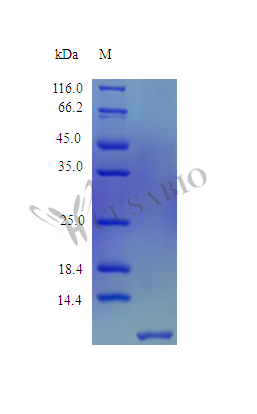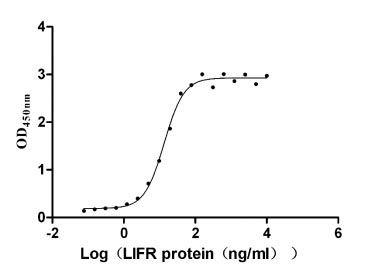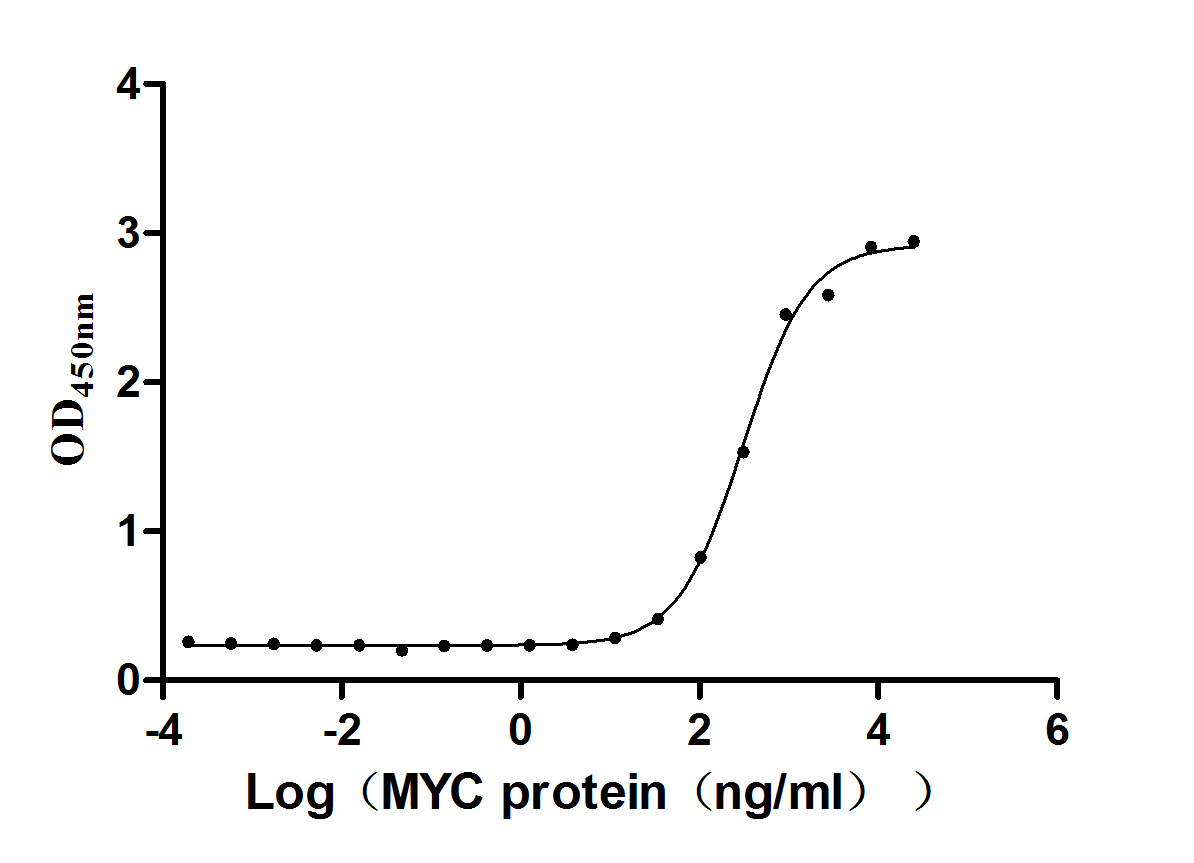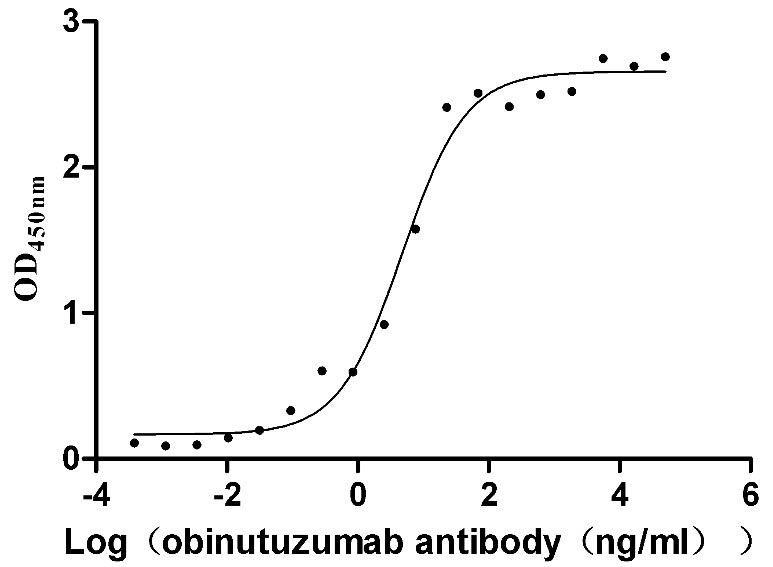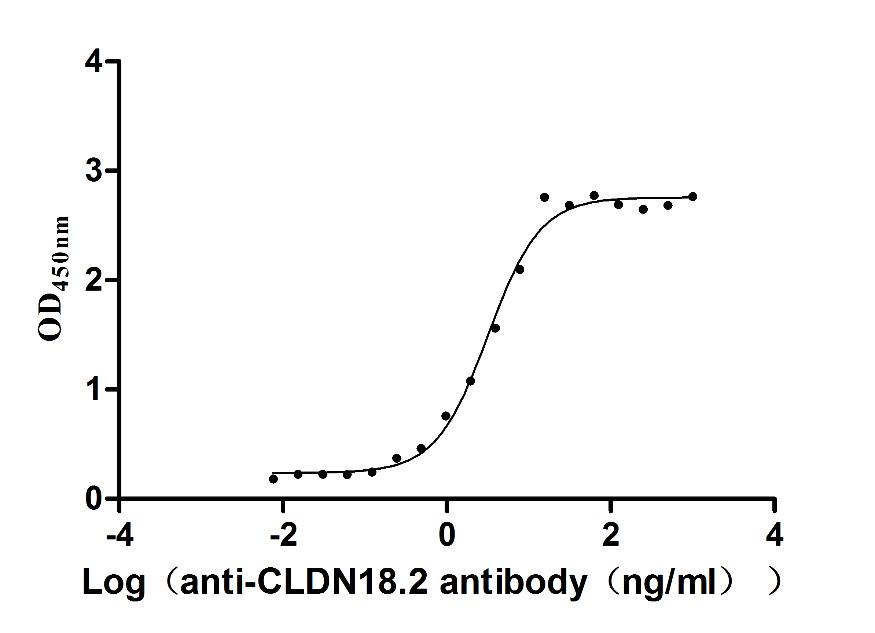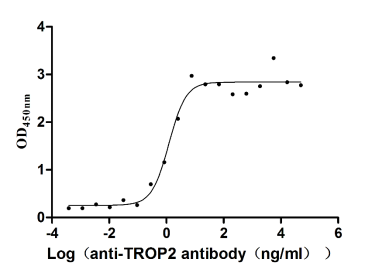Recombinant Human Beta-defensin 103 protein (DEFB103A)
In Stock-
中文名稱:Recombinant Human Beta-defensin 103 protein(DEFB103A) (Active)
-
品名簡稱:Recombinant Human DEFB103A protein (Active)
-
貨號:CSB-AP003051HU
-
說明書:
-
規格:¥852
-
圖片:
-
其他:
產品詳情
-
純度:>98% as determined by SDS-PAGE.
-
內毒素:Less than 1.0 EU/μg as determined by LAL method.
-
生物活性:Fully biologically active when compared to standard. The ED50 as determined by anti-microbial activity against E.coli. is less than 30 μg/ml, corresponding to a specific activity of >33.3 IU/mg.
-
基因名:DEFB103A
-
Uniprot No.:
-
別名:BD 3; BD-3; BD3; beta 103; Beta defensin 103A; Beta defensin 103A precursor; Beta defensin 3; Beta-defensin 103; Beta-defensin 3; D103A_HUMAN; DEF B3; DEFB 103; DEFB 103A; DEFB 3; DEFB-3; DEFB103; DEFB103A; DEFB103B; DEFB3; Defensin; Defensin beta 103A; Defensin beta 3; Defensin like protein; Defensin-like protein; HBD 3; hBD-3; HBD3; HBP 3; HBP3; mBD3
-
種屬:Homo sapiens (Human)
-
蛋白長度:Full Length of Mature Protein
-
來源:E.Coli
-
分子量:5.2 kDa
-
表達區域:23-67aa
-
氨基酸序列GIINTLQKYY CRVRGGRCAV LSCLPKEEQI GKCSTRGRKC CRRKK
-
蛋白標簽:Tag-Free
-
產品提供形式:Liquid or Lyophilized powder
-
緩沖液:0.2 μm filtered 20 mM PB, pH 7.4, 130 mM NaCl ,lyophilized
-
儲存條件:Store at -20°C/-80°C upon receipt, aliquoting is necessary for mutiple use. Avoid repeated freeze-thaw cycles.
-
保質期:The shelf life is related to many factors, storage state, buffer ingredients, storage temperature and the stability of the protein itself.
Generally, the shelf life of liquid form is 6 months at -20°C/-80°C. The shelf life of lyophilized form is 12 months at -20°C/-80°C. -
貨期:5-10 business days
-
Datasheet & COA:Please contact us to get it.
相關產品
靶點詳情
-
功能:Exhibits antimicrobial activity against Gram-positive bacteria S.aureus and S.pyogenes, Gram-negative bacteria P.aeruginosa and E.coli and the yeast C.albicans. Kills multiresistant S.aureus and vancomycin-resistant E.faecium. No significant hemolytic activity was observed.
-
基因功能參考文獻:
- this study shows that hBD3 amplifies the response to bacterial DNA in both mouse and human immune cells in a TLR9-dependent manner PMID: 28102569
- the role of DEFB103 gene copy number variation (CNV) in ankylosing spondylitis (AS) susceptibility, was investigated. PMID: 26224324
- It may be concluded hepatitis B virus up-regulates HBD-3 and A3G expression in vivo and in vitro in placental trophoblast and lack of this up-regulation is possibly associated with intrauterine transmission of hepatitis B. PMID: 25196417
- The encoded peptide displays antimicrobial activity against S. aureus and E. faecium. PMID: 11085990
- these observations suggest that there may be an interracial difference in DEFB4/103A copy numbers between admixed populations and a relationship between DEFB1 single nucleotide polymorphisms and DEFB4/103A copy number variation PMID: 23194186
- Human beta-defensin 3 peptide is increased and redistributed in Crohn's ileitis PMID: 23511030
- study demonstrates that HBD2 and 3 activate plasmacytoid dendritic cells by enhancing the intracellular uptake of CpG and self DNA and promote DNA-induced IFN-alpha production in a TLR9-dependent manner PMID: 23776172
- Mapping of key residues in the interaction between human Beta-defensin 3 and CXCR4 reveals key defensin motifs involved in protein binding. PMID: 23659571
- These results suggest an important role for hBD3 in inducing dendritic cell activation, migration, and polarization. PMID: 22951718
- Using a large, unique cohort of pediatric CA-SAB, this study found no significant association between DEFB1 genetic variation or DEFB4/DEFB103 gene copy number and susceptibility for Staphylococcus aureus bacteremia PMID: 22384213
- Human beta-defensin 3 exhibits further functions than antimicrobial peptide activity in cultured bone cells, including stimulation of proliferation and differentiation. PMID: 21520074
- Data show that high-glucose conditions inhibited the BD3 expression of epidermal keratinocytes. PMID: 21442129
- hBD-1 might function as a tumor suppressor gene in oral squamous cell carcinoma, while hBD-2 and -3 might be protooncogenes. PMID: 21280982
- extraplacental membranes can react differentialy to the arrival of E. coli, secreting HBD2 and HBD3 mainly in the choriodecidua region. PMID: 21122132
- PPARgamma regulates the 1,25D-induced hBD-3 and cathelicidin expression in keratinocytes through the regulation of AP-1 and p38 activity. PMID: 20970965
- hBD3 represents a novel NF-kappaB-regulated mediator of CCR7 expression and anti-apoptotic pathways. PMID: 21071608
- Inducibility of HBD3 influences the severity of Gram-positive skin infection in humans in vivo. PMID: 20404083
- Data show that beta-defensin cluster (DEFB4, DEFB103 and DEFB104) varied between 2 and 9 copies per genome, and high copy numbers (>4) were underrepresented among patients, suggesting that increased copy numbers could protect from CD. PMID: 20483368
- Human pulmonary cells produce hBD-3 upon L. pneumophila infection via a TLR-JNK-AP-1-dependent pathway which may contribute to an efficient innate immune defense. PMID: 20615218
- The beta-defensin antimicrobial peptides hBD1, hBD2 and hBD3 were expressed by immature dendritic cells as well as gingival epithelial cells. PMID: 20618959
顯示更多
收起更多
-
亞細胞定位:Secreted.
-
蛋白家族:Beta-defensin family
-
組織特異性:Highly expressed in skin and tonsils, and to a lesser extent in trachea, uterus, kidney, thymus, adenoid, pharynx and tongue. Low expression in salivary gland, bone marrow, colon, stomach, polyp and larynx. No expression in small intestine.
-
數據庫鏈接:
Most popular with customers
-
Recombinant Human Leukemia inhibitory factor receptor (LIFR), partial (Active)
Express system: Mammalian cell
Species: Homo sapiens (Human)
-
Recombinant Human papillomavirus type 16 Protein E7 (E7) (Active)
Express system: E.coli
Species: Human papillomavirus type 16
-
Recombinant Human Tyrosine-protein kinase Mer (MERTK), partial (Active)
Express system: Mammalian cell
Species: Homo sapiens (Human)
-
Recombinant Human B-lymphocyte antigen CD20 (MS4A1)-VLPs (Active)
Express system: Mammalian cell
Species: Homo sapiens (Human)
-
Recombinant Macaca fascicularis Claudin 18.2 (CLDN18.2)-VLPs (Active)
Express system: Mammalian cell
Species: Macaca fascicularis (Crab-eating macaque) (Cynomolgus monkey)
-
Recombinant Human Tumor-associated calcium signal transducer 2 (TACSTD2), partial (Active)
Express system: Mammalian cell
Species: Homo sapiens (Human)
-
Recombinant Rat Gastric inhibitory polypeptide receptor (Gipr), partial (Active)
Express system: Mammalian cell
Species: Rattus norvegicus (Rat)
-
Recombinant Human Kidney-associated antigen 1 (KAAG1) (Active)
Express system: E.coli
Species: Homo sapiens (Human)

